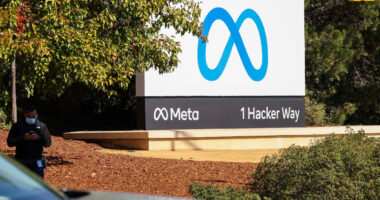
The Federal Reserve is entering an unfamiliar environment at the start of 2022. For the first time in decades, officials are preparing to raise interest rates when inflation is uncomfortably high rather than very low.
The last time the Fed lifted rates from near zero, at the end of 2015, inflation was running below its 2% target and the unemployment rate—a measure of labor slack—was declining gently.
When Fed officials meet this Tuesday and Wednesday, they will confront an unemployment rate that has dropped like a stone—to 3.9% in December from 5.9% in June. Consumer prices rose 5.7% in November from a year earlier, using the central bank’s preferred gauge.
The developments explain why Fed Chairman Jerome Powell pivoted over the past two months from focusing on boosting growth to slowing inflation, and why he and his colleagues are likely to signal this week they could begin raising rates in March.
Central-bank officials last month penciled in three quarter-percentage-point interest rate increases this year. That would lift their benchmark short-term rate to a range between 0.75% and 1% by the end of the year, from its current level near zero.
They based the projections for the increases on a forecast that sees inflation falling below 3% by December. Some have indicated, however, that if it looks like inflation is on track to stay above 3% by then, they would have to raise rates more aggressively. The goal would be to lift them back faster to a level aimed to slow down hiring and economic growth, which most officials estimate is somewhere above 2.5%.
A faster pace of rate rises later this year could call for increasing rates at consecutive policy meetings, which are scheduled roughly every six weeks—something the Fed hasn’t done since 2006.
If inflation is uncomfortably high later this year, “they may need to move at every meeting,” said Matthew Luzzetti, chief U.S. economist at Deutsche Bank. “We may need to shake ourselves of this notion that a quarterly hiking path is a sufficient policy response.”
SHARE YOUR THOUGHTS
What steps should the Fed take to address rising inflation? Join the conversation below.
In testimony on Capitol Hill this month, Mr. Powell said inflation is high because supply and demand are out of whack. The Fed can’t solve shipping or supply-chain bottlenecks, but higher interest rates can eventually cool demand by slowing hiring and income growth. Officials are hoping that inflation declines as the supply problems ease and demand shifts from goods, where prices rose sharply last year, toward services, where inflation has been less extreme.
Fed officials face two main questions: How much will inflation fall over the first half of the year? And what will they do if the answer is “not enough”?
“They would raise rates faster, significantly faster, if they came to believe inflation was staying high,” said William English, a former senior Fed economist who is now a professor at the Yale School of Management.
The pace of rate increases “is going to really depend on how the economy evolves,” Cleveland Fed President Loretta Mester said in a recent interview. “It is hard to prejudge what we’re going to do.”
Given the uncertainty, officials will also have to debate whether to offer any meaningful forward guidance, the words they use to describe their intentions for interest rates over the next few years.
Forward guidance has been an important part of the Fed’s monetary-policy arsenal for most of the past two decades, a period in which inflation and interest rates have generally been low.
The Fed first relied on such conditional promises—often cloaked in adjectives that became fraught with significance—in the early 2000s. Officials initially employed the tactic in 2003 when they wanted to signal plans to keep rates low and later to signal coming rate increases in a manner that wouldn’t bulldoze markets, as had occurred in 1994, when the Fed raised rates sharply.
Before commencing rate rises in 2004, the Fed said such increases were likely to proceed at a “measured” pace. They subsequently raised rates by a quarter-percentage point at 17 consecutive policy meetings. In 2015, the Fed prepared markets for an even milder path of rate rises by telegraphing such increases would be “only gradual.”
But the economic environment today—one with much greater uncertainty about how labor markets, wages, and inflation will unfold—may prevent the Fed from providing clues or assurances. At his congressional hearing, Mr. Powell said the Fed would need to be humble and nimble.
“It will be tempting perhaps to say something about ‘gradual,’ but I’m really not sure that they can,” Mr. English said. “It’s hard to have much confidence that they’re going to end up moving gradually.”
That may mean steering clear of the hand-holding to which investors have grown accustomed and bracing for more volatile markets if inflation doesn’t soon cool off.
Write to Nick Timiraos at [email protected]
Copyright ©2022 Dow Jones & Company, Inc. All Rights Reserved. 87990cbe856818d5eddac44c7b1cdeb8








